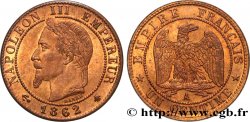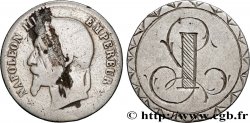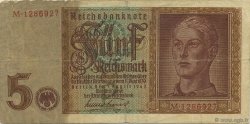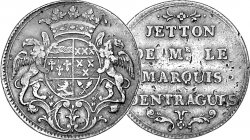fme_498130 - SECOND EMPIRE Bataille d’Inkermann
无库存.
所有在网站上销售的产品 (2018)
价格 : 180.00 €
所有在网站上销售的产品 (2018)
价格 : 180.00 €
种类 Bataille d’Inkermann
日期: 1854
材质 copper
直径 72 mm
模子方针 12 h.
硬币制模工 OUDINÉ Eugène-André (1810-1887)
重量 178,2 g.
侧面 lisse + abeille CUIVRE
印模 Abeille CUIVRE
关于品相的说明
Aspect nettoyé au revers. Traces de manipulation. Présence de coups et petites rayures
正面
正面的文字 NAPOLEON III - EMPEREUR.
正面的说明书 Tête nue à gauche, signé : E. A. OUDINE. F..
背面
背面的文字 BATAILLE D’INKERMANN // 5. NOVEMBRE 1854..
背面的说明书 Femmes ailées aux bustes dénudés personnifiants l’Angleterre et la France, brandissant les drapeaux et tenant entre elles un jeune arbre se terminant en hampe sommée du croissant turc. A l’arrière plan, guerriers russes antiques s’enfuyant sous les foudres. Signé : E. A. OUDINE. F..
评论
Faisons remarquer que le poinçon abeille fut utilisé après 1860, jusqu’en 1879. Nous pourrions donc supposer que cet exemplaire fut refrappé. L’exemplaire original devrait être frappé d’une main indicatrice.
La bataille d’Inkermann eu lieu le 5 novembre 1854.
Le plateau d’Inkermann, situé entre Karabelnaia et la vallée de la Tchernaia, en Crimée, était tenu par les anglais. Il fut attaqué par 36 000 russes appuyés par une forte artillerie. Lord Raglan appela les Français. Le général Bosquet lança les deux premiers bataillons qu’il avait sous la main et les fantassins arrêtèrent le mouvement ennemi.
Cette journée coûta 12 000 hommes russes, 2 600 hommes anglais et 1 700 hommes français.
Note that the bee punch was used after 1860, until 1879. We could therefore assume that this example was re-struck. The original example should have been struck with an indicator hand. The Battle of Inkermann took place on November 5, 1854. The Inkermann plateau, located between Karabelnaia and the Tchernaia Valley, in Crimea, was held by the English. It was attacked by 36,000 Russians supported by strong artillery. Lord Raglan called in the French. General Bosquet launched the first two battalions he had at hand and the infantry stopped the enemy movement. This day cost 12,000 Russian men, 2,600 English men and 1,700 French men
La bataille d’Inkermann eu lieu le 5 novembre 1854.
Le plateau d’Inkermann, situé entre Karabelnaia et la vallée de la Tchernaia, en Crimée, était tenu par les anglais. Il fut attaqué par 36 000 russes appuyés par une forte artillerie. Lord Raglan appela les Français. Le général Bosquet lança les deux premiers bataillons qu’il avait sous la main et les fantassins arrêtèrent le mouvement ennemi.
Cette journée coûta 12 000 hommes russes, 2 600 hommes anglais et 1 700 hommes français.
Note that the bee punch was used after 1860, until 1879. We could therefore assume that this example was re-struck. The original example should have been struck with an indicator hand. The Battle of Inkermann took place on November 5, 1854. The Inkermann plateau, located between Karabelnaia and the Tchernaia Valley, in Crimea, was held by the English. It was attacked by 36,000 Russians supported by strong artillery. Lord Raglan called in the French. General Bosquet launched the first two battalions he had at hand and the infantry stopped the enemy movement. This day cost 12,000 Russian men, 2,600 English men and 1,700 French men








 对产品描述纠错
对产品描述纠错 打印
打印 分享我的选择
分享我的选择 提问
提问 Consign / sell
Consign / sell
 产品介绍
产品介绍











